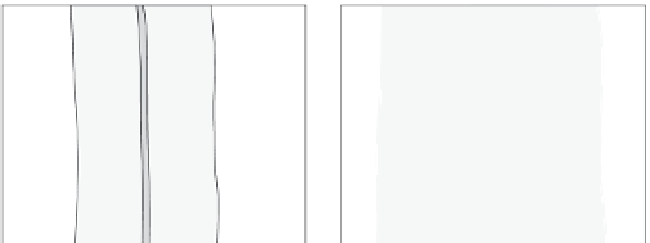Geology Reference
In-Depth Information
Simple Fault Zone
Complex Fault Zone
Damage
zone
Fault
core
Country
rock
Damage
zone
Fractured
lens
Fault gouge
band
A
B
Included
blocks
Localized
fault plane
<50 cm
~100 m
~100 m
<1 km
Geologic Mapping
Aeromagnetic Mapping
C
D
Fig. 4.17
Fault zone complexity in
models and maps.
A. Traditional model of a strike-slip
fault with a fault core of a few
centimeters and a zone of damaged
bedrock extending about 100 m on
either side. B. Complexly fractured
strike-slip fault zone with bands of
fault gouge separating a fractured lens
of commonly rotated and sheared
bedrock within a broad (1 km wide)
damage zone. A, B: Modified from
Faulkner
et al.
(2003). C. Quaternary
faults in the Rio Grande rift near
Albuquerque, New Mexico, compiled
from previous geological studies.
D. Quaternary faults in the same area
as interpreted from aeromagnetic
anomalies that are attributed to
thickness changes in Quaternary
sediments across faults. C, D: Modified
from Grauch (2001).
0
5
km
time, slip accumulates on numerous surfaces,
and blocks between faults rotate and shear.
Not surprisingly, the resulting deformation
pattern can be complex, too!
Strike-slip faults
Some of the best-known faults in the world,
such as the San Andreas, Altyn Tagh, and North




















































































































































































































































































































































































































































































